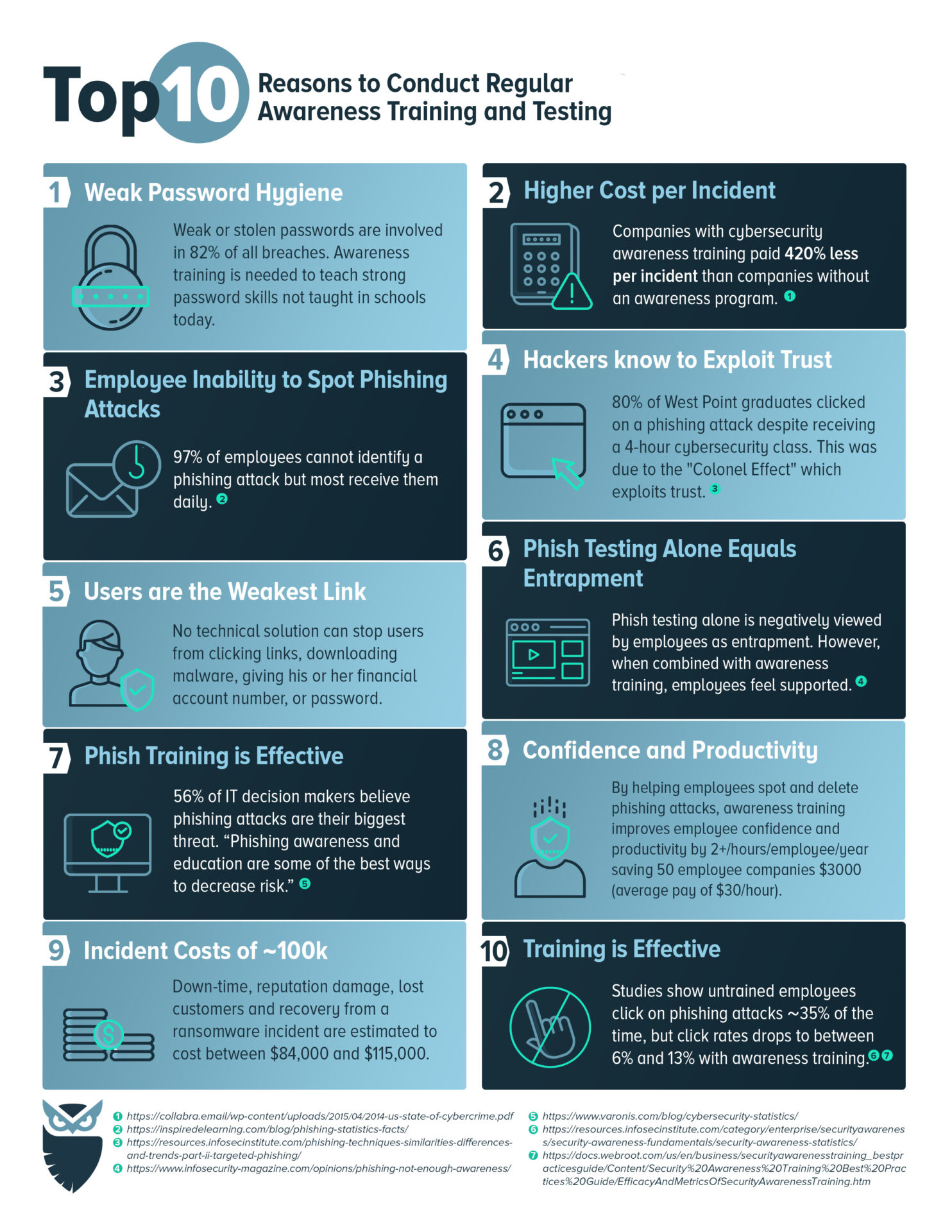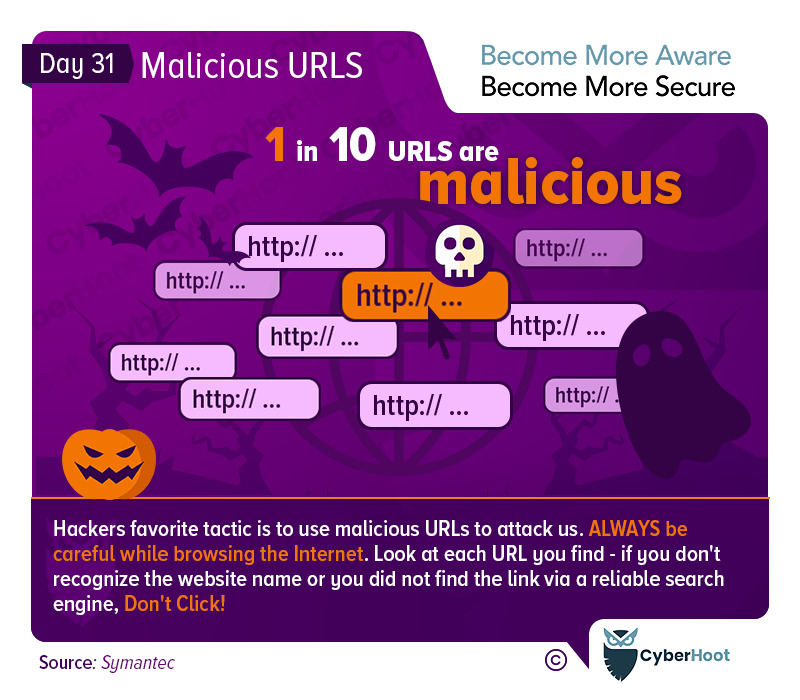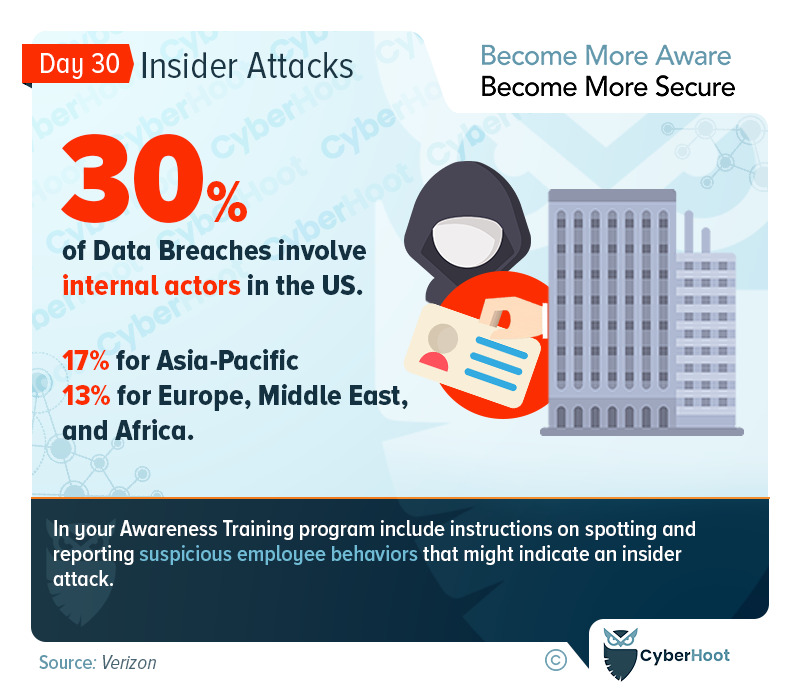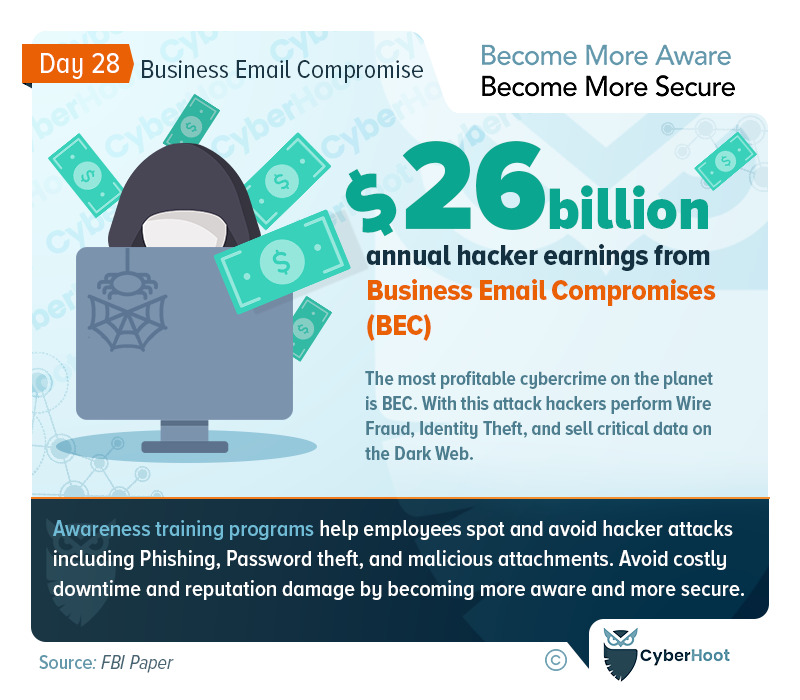Why awareness training?
Awareness training is a key component of a strong defense-in-depth cybersecurity program. If you’re struggling to justify awareness training to your company, this infographic can provide some strong reasons to adopt. Verizon’s 2022 Data Breach Report confirmed that the human element played a significant role in 82% of all breaches over the past five years. This is reason enough to provide training to your employees. (source)
Download CyberHoot’s infographic and pitch its ideas to company leadership or include them in a presentation to justify adoption of an awareness training solution. Feel free to insert your company logo in the top left corner and brand it as your own.
With CyberHoot you can learn about much more than just awareness training. You’ll learn about password hygiene, why password managers are so important, and how to spot and avoid phishing attacks. You can provide product training to staff, Apple web monitoring, governance policies and much more. Additionally, you can hire CyberHoot vCISOs to help you implement all of the cybersecurity best practices listed below.
CyberHoot Best Practices:
- Train your employees on the common attacks out there. From weak passwords and password managers, to the importance of multi-factor authentication and how to spot phishing attacks. Awareness is the key to protecting your business.
- Control your employees with a cybersecurity policy, including acceptable use, password, information handling, and a written information security policy.
- Establish cybersecurity processes such as a Vulnerability Alert Management Process (VAMP) and a Cyber Incident Management Process (CIMP) to guide your actions in the face of an emergency. Then move on to onboarding and onboarding processes, SaaS management, and third-party risk management.
- Create strong technical defenses including: firewall, anti-virus, anti-malware, anti-spam, multi-factor authentication on critical accounts, enable full disk encryption, and most importantly, adopt, train and require all employees to use a password manager.
- Test employees on how to spot and avoid phishing attacks. CyberHoot has released a disruptive method of phish testing that fills gaps in your employees’ knowledge without penalizing them for failure. We reward them for success instead. more information.
- Back up your data by following the 3-2-1 backup methodology to ensure you can recover your business from a cyber security incident.
- In the current age of working from home, make sure you manage personal devices that connect to your network by verifying their security (patching, anti-virus, DNS protections) or completely banning their use.
- If you haven’t had a third-party risk assessment done in the last two years, you should do it now. Establishing a risk management framework in your organization is critical to addressing your most difficult risks with your ultimate time, attention and money.
- Buy cyber insurance to protect you in the event of a catastrophic failure. Cyber insurance is no different than car, fire, flood or life insurance. It’s there when you need it most.
CyberHoot believes that for many businesses and managed service providers, you can greatly improve your defenses and the chances of not becoming another victim of a cyber attack if you follow the advice above.









